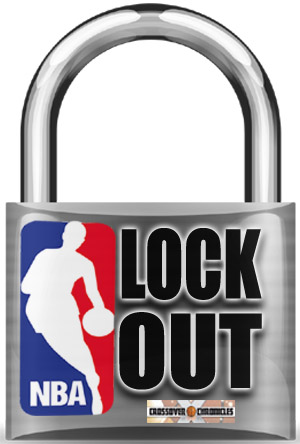 There’s a lot of information flying around today now that the lockout is, in theory, over. Here’s a look at some of the finer points of the deal and how it might affect certain teams.
There’s a lot of information flying around today now that the lockout is, in theory, over. Here’s a look at some of the finer points of the deal and how it might affect certain teams.
Exceptions:
The mid-level exception will be $5 million per year for up to four years for teams over the cap but under the luxury tax threshold. Tax paying teams will get a $3 million per year for up to four year “mini” MLE.
Additionally, teams that are under the cap will be allowed to exceed it now with a new $2.5 million exception.
Net effect: This appears to be one of those “competitive balance” areas of the deal. The Los Angeles Lakers, for example, have a $94 million payroll for this upcoming season. Instead of $5 million to spend on some help, they’ll get $3 million. That’s putting them in a different class of free agent. Meanwhile, A young, promising team like the Rockets can probably find a good deal with the extra $2.5 million to compete against a team brushing up against the tax threshold. Score one for the little guys here.
Sign-and-trades:
They will still be allowed, so there won’t be a “Carmelo Anthony” rule in this CBA. The NBA has sought to eliminate these kinds of deals, but made this concession in the most recent round of talks.
Net effect: No change from the current deal, really, in that a player can sign a more lucrative extension with his current team and then be traded. Chris Paul and Dwight Howard come up all the time in this part of the discussion. Players fought hard to get this in the deal.
Contracts:
A team can use its Bird Rights to sign players to a five year contract while non-Bird contracts will be four years. Rookie and veteran minimums will remain untouched.
Net effect: Not much change. Bird Rights still exist to give teams a chance to keep their stars. I’m still not sure what the tiered luxury-tax system will look like, or even if it still exists in this new deal. This is also the mechanism players wanted to keep in conjunction with the sign-and-trade system.
Those are the biggies as far as systemic issues. The BRI split will land somewhere between 49-51% depending on revenue, with the 51% being an actual, realistic amount (as opposed to whatever astronomic revenue figure owners had been pitching). There are still a lot of issues that need to be worked out, so this isn’t really over yet. And it still has to be ratified, so there’s the outside chance players will reject it. They probably won’t, though. This thing is just about done.
Sources (please check them out for more info): Adrian Wojnarowski, Ken Berger, NBA.com, CBS Eye on Basketball, Sheridan Hoops
